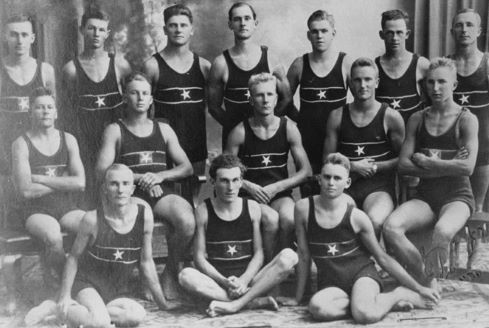The Swimming and Lifesaving Club was able to form on New Years Day 1916 because eight ‘locals’ earned their Royal Lifesaving qualifications the day before. Zola was one of the eight local men who qualified and so is a member of a select group – the Foundation Members.
On 15 January 1916 a meeting at Deans Boatshed, on the Prentis property at Petrie’s Creek, determined the Club colours of Royal Blue, Canadian Red, a Pale Blue star and white piping. On 13 March 1916 a meeting of the Bli Bli members at the home of Hubert Wells decided to send a team to a Lifesaving competition in Brisbane called the ‘Barry Cup’, to be held on 3 April 1916.
As Captain of the Bli Bli squad, Zola Hannus was the first Maroochydore member to lead a team in Lifesaving competition. The team came third at its first outing. It was given a warm welcome in far-off Brisbane by the Royal Lifesaving Instructors of December 1915.

The Finnish farming community of Bli Bli and Maroochy River Districts was to contribute significantly to the early decades of the Maroochydore Swimming and Lifesaving Club: the Suosaari and Anderson families contributed much in the period 1919-1950. But the first and the most poignant Finnish contribution is that of a humble young immigrant farmer. Zola came to Australia at the age of 2 years in 1900, his family settling briefly at Chillagoe in North Queensland but then moving to the ‘Finsbury’ farming settlement at Image Flat near Bli Bli. Zola’s father died in 1907 and his mother married Johann Anderson in 1910.
Zola answered the call to Lifesaving service at the age of 17 years. Remarkably, he became Captain of the Bli Bli Squad for Lifesaving training during those closing days of 1915. Considering that Jack Parry captained the rival Maroochydore Squad at age 34, Zola was clearly an exceptional young man.
